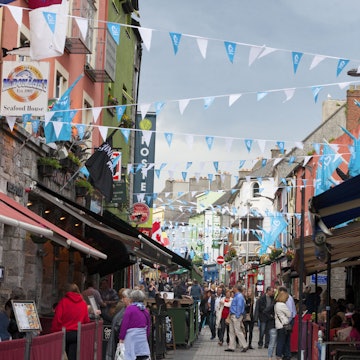

People gather at Stonehenge on the winter solstice to witness the sunrise after the longest night of the year. Karl Hendon/Getty Images
For centuries, cultures all over the northern hemisphere have recognized the year's longest night – which usually falls around December 21 – as a day to be celebrated. Marking the end of winter's darkness and the start of slowly extending days, the solstice always exudes a hint of magic, providing an opportunity for spiritual cleansing, defense against evil influences and a return to the abundance of spring and summer.
When the winter solstice returns this year, people around the world will come together to bring light to the year’s darkest day. Here are the best places to celebrate the winter solstice in 2024.
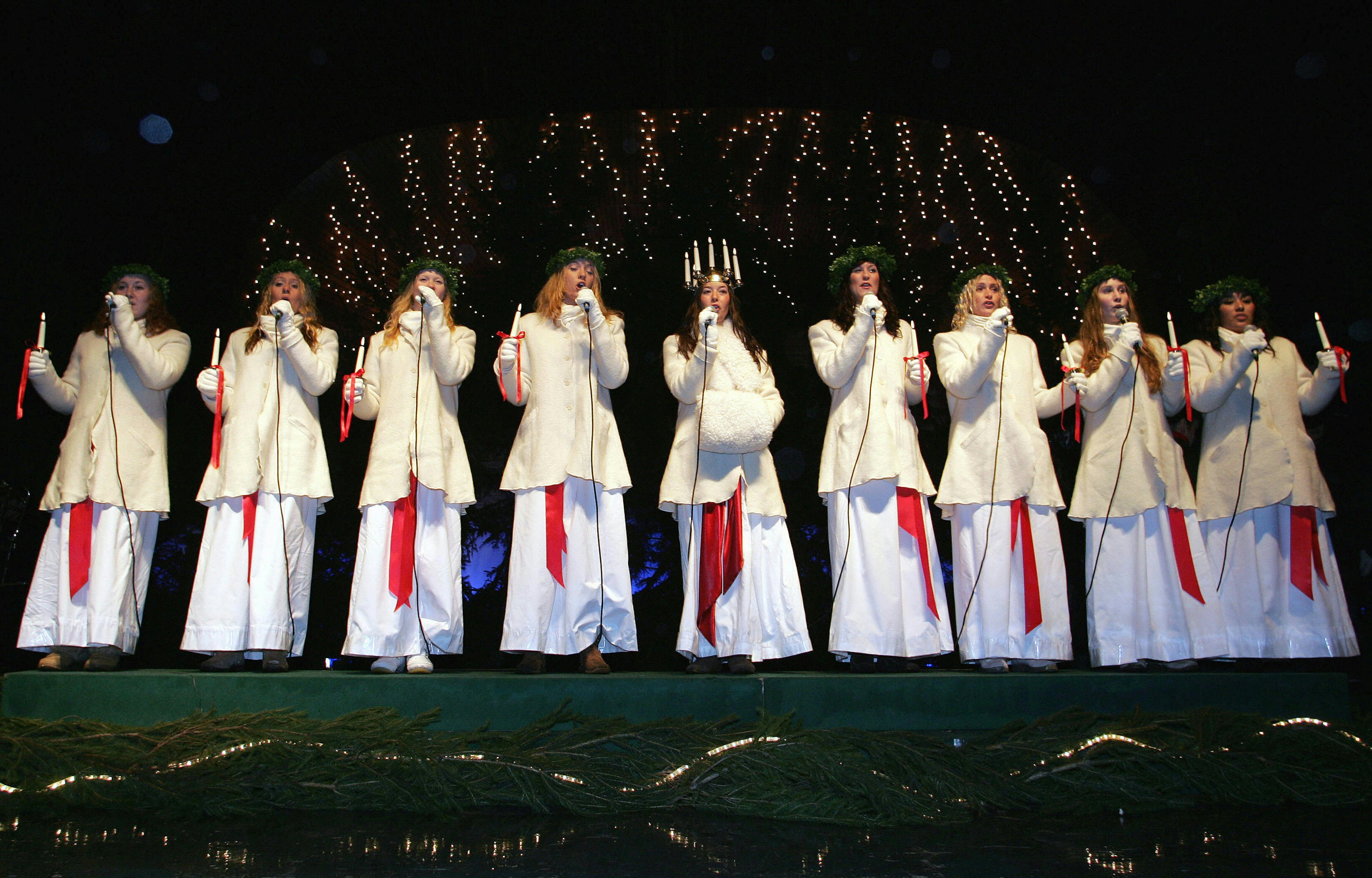
1. St Lucia’s Day, Festival of Lights and Yule, Scandinavia
Scandinavia has a long tradition of marking the day that signals an approaching end to its long, dark winters with festivities that interweave pre-Christian and Christian rituals. In Sweden, Finland, Denmark and Norway, St Lucia’s Day takes place on December 13, the shortest day of the year according to the Julian calendar.
Before Christianity came to the region, Norse people recognized the winter solstice by burning large fires to scare away evil spirits, and this tradition has strongly influenced the present-day Festival of Lights. Now dedicated to St Lucia, a 4th-century Christian martyr executed by the Romans, the festival celebrates light conquering darkness. Processions feature thousands of candles, and the eldest daughter in every household dons a white dress and a crown of candles before serving coffee and baked treats to the rest of the family.
St Lucia’s Day kicks off the Yule season, a period more-or-less synonymous with Christmastime festivities. However, Yule – thought to originate from the Old Norse name for the festival, Jōl – was originally a pre-Christian feast celebrating the return of the sun and the god Odin. Many of the modern holiday traditions can trace their origins to this festival, including Yule logs and evergreens, drinking cider and mulled wine, and gift-giving.

2. Stonehenge, England
There’s perhaps no better time to visit the prehistoric stone circle of Stonehenge than on the night of the winter solstice (and the summer solstice also draws a huge crowd). Despite the chilly weather, New Age spiritualists (neo-druids, neo-pagans, Wiccans) mix with tourists, travelers and party people at this ancient, mystical structure to honor the year’s shortest day.
The two solstice days are the only times when entry to this English Heritage monument is free, and visitors are allowed to roam freely and explore the giant structure up close. If you can't make it in person, check out the livestream of the event on English Heritage's YouTube channel.

3. Winter solstice at Newgrange, Ireland
Thought to have been built around 3200 BCE, mysterious Newgrange in County Meath, Ireland, draws much attention during the winter months. This circular structure was designed so that its longest passage and inner chamber are illuminated completely at sunrise during the winter solstice, leading archaeologists to believe that Newgrange may have served as a religious or ceremonial center.
Due to the limited capacity of this ancient chamber, entry to Newgrange at sunrise from December 18 and 23 is controlled by a lottery. Sixty people are selected from the large pool of applicants (and invited to bring a guest), and 10 winners are granted permission to enter the structure at dawn each morning to witness this remarkable solar phenomenon.
If you want to experience the winter solstice with a prehistoric edge, apply for next year’s lottery through the Brú na Bóinne Visitor Centre. For those who don’t nab a ticket, there are regular tours available at other times.
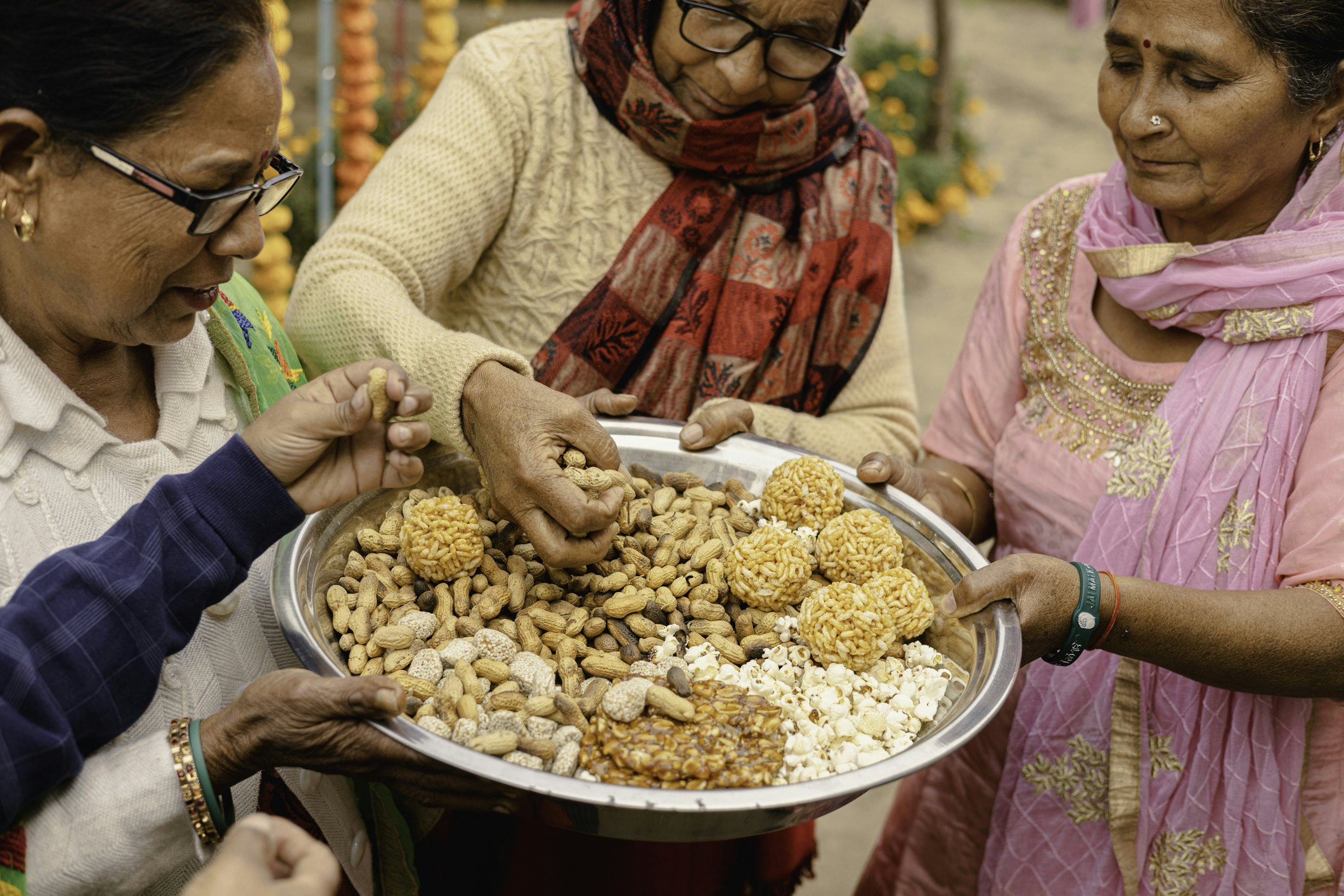
4. The fires of Lohri, India
Celebrating the end of winter (and the harvest season), Lohri is one of the most popular festivals in northern India, particularly in the states of Punjab and Haryana. Originally celebrated on the winter solstice, Lohri now takes place on January 13, right before Makar Sankranti, the Hindu festival dedicated to the sun deity Surya. While the celebration has multiple meanings, it pays homage to the fire and sun gods, and it’s particularly important for families who have recently celebrated births or marriages.
In the days leading up to the holiday, people gather firewood in preparation for the massive bonfires lit on Lohri night. This is also a time to enjoy traditional festival treats such as popcorn, peanuts and gajak (a dessert made of sesame seeds and jaggery), which are enjoyed by participants and thrown into the fire as offerings.
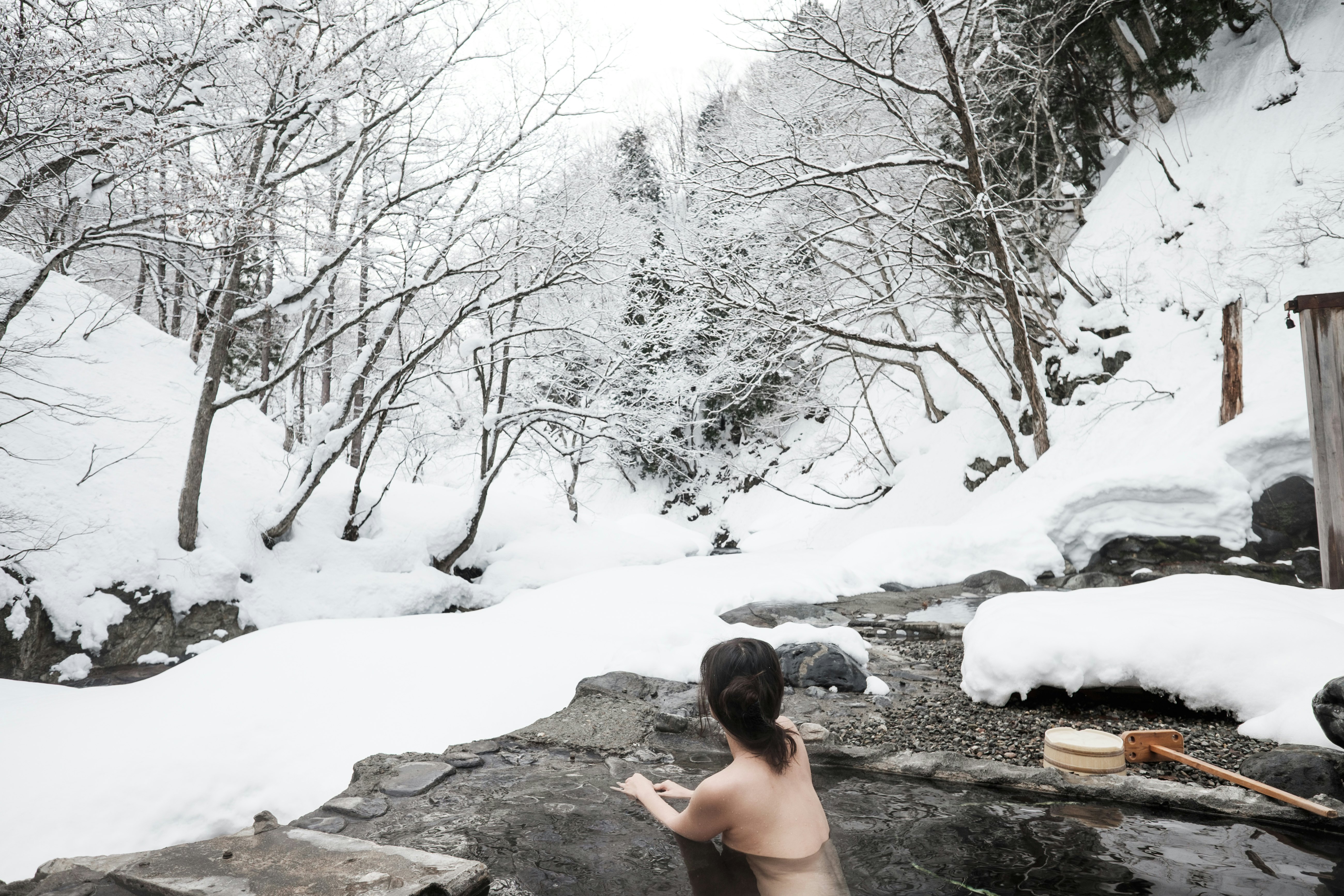
5. Tōji traditions, Japan
When winter dresses Japan in frosty white, what do you do? Take a relaxing soak in a bath full of yuzu fruit, of course! Known as a yuzu-yu, taking a traditional citrus-infused bath is a popular ritual during the country’s Tōji (winter solstice) celebrations. Its purpose is to provide a warming effect that wards off illness in the cold months, a practice that dates back hundreds of years.
Other winter solstice traditions include eating healthy foods such as winter squash, toji-gayu (rice porridge with adzuki beans), and foods with names containing the ‘n’ sound, which are believed to bring good luck. Ninjin (carrot), udon (noodles) and ginnan (ginko nut) are all good options.
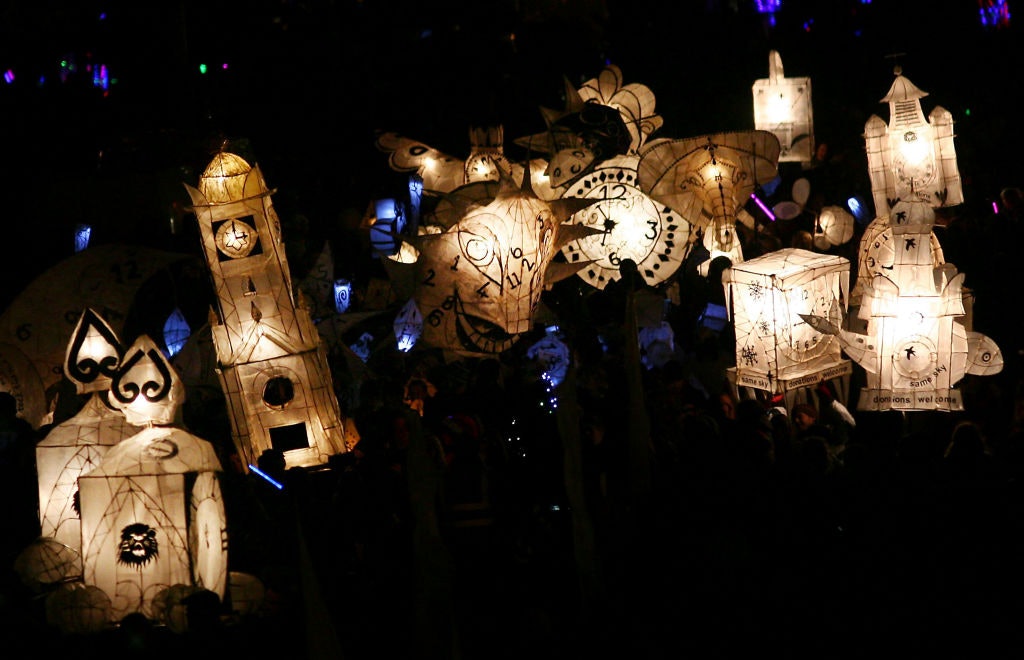
6. Burning the Clocks, Brighton, UK
If you fancy a contemporary take on the winter solstice celebrations, Burning the Clocks is a quirky lantern parade held in Brighton by the arts charity Same Sky on the evening of December 21. The event has been running for 30 years and was established as a faith-agnostic way to celebrate the festive season.
Participants construct their own paper and willow lanterns and walk through the streets of Brighton before throwing their creations into a bonfire on the beach. It's one of several quirky festivals in East Sussex – check out the Lewes fireworks in November.

7. Dongzhi Festival, China
People in China have been gathering to mark the midpoint of winter for thousands of years – the Dongzhi Festival was deemed an official holiday as early as the Han Dynasty (206 BCE–220 ACE). Today, people celebrate the festival by sharing a hearty meal with those closest to them, balancing the yin energy of winter (dark, inactive) by eating foods high in yang energy (warm, light).
Culinary traditions vary across the country – tang yuan (glutinous rice balls) are popular in the south, while the north indulges in dumplings and mutton. Many people also take this time to worship their ancestors, leaving them offerings and a meal, too.

8. Winter Solstice Lantern Festival, Vancouver, Canada
On December 21, Vancouver puts on one of its most festive events, with thousands taking to the streets of Granville Island and Yaletown to light up the darkest night. The Winter Solstice Lantern Festival features lantern-making workshops, fire performances and musical entertainment, creating a carnival-like atmosphere that drives away any winter blues.
It's a great event for families if you don't mind the kids being up a little late. Other attractions include the Labyrinth of Light, an indoor art installation featuring 600 candles, and storytelling presentations.

9. Drag a yule log, Latvia
Considering Christianity’s lengthy timeline, Latvia’s introduction to the faith came rather late compared to other parts of Europe. Because of this, many pre-Christian traditions remain intact, including those associated with the winter solstice.
Across the country, it’s traditional to drag a yule log to a communal fire, cleansing the community of the hardships of the past year. Masked singers also travel from house to house, chasing away evil spirits and spreading holiday joy. Riga's Town Hall Square (Rātslaukums) is a popular place to watch this tradition unfold.

10. Sing a Koliada tune, Slavic countries
Another example of religious syncretism involving the winter solstice is the Slavic tradition of Koliada, a series of celebrations taking place between Christmas Day and Epiphany that largely focus on door-to-door caroling. Before the arrival of Christianity, the songs sung during these outings centered on fertility, renewal and the welcoming of the light.
These celebrations are found in many countries across Eastern Europe, including Czechia and Poland, but themes have been toned down in favor of more familiar Christmas topics. However, you’ll still sometimes see people parading dressed as characters linked to these pre-Christian traditions – goats, horses, bulls and maybe even a spirit or two.
Look out for kolędy (carol) singers wearing traditional costumes (including some representing pre-Christian characters) around the solstice in the Polish region of Silesia.

11. Eat watermelon on Yalda Night, Persian countries
Translating to “Night of Rebirth,” the festival of Yalda (also known as Shab-e-Yalda) has been celebrated in Iran and other formerly Persian regions in the Middle East and Central Asia for thousands of years, marking the return of the sunlight and abundant harvests. Traditionally, large bonfires were lit and kept burning through the morning, but today, families usually celebrate with cozy nights at home, eating fruits and nuts and drinking tea.
Pomegranates, watermelon and other red fruits symbolize the returning sun and life. Tradition says that eating watermelon will protect you from the cold of winter and the heat of summer, while pomegranate will protect you from evil spirits.

12. Visit Indigenous mounds, Indiana, USA
The winter solstice has long been important to Indigenous communities in North America, including the Hopi, Zuni, Blackfeet and Ojibwe nations, to name just a few. While many of these celebrations are private and not open to the public, the importance of such celestial events in Indigenous cultures can be seen at public historic sites around North America.
Close to Evansville in Indiana, the historic Angel Mounds mark the location of what was once a bustling Native American settlement between 1000 CE and 1450 CE. The mounds align with sunrise on the summer solstice and sunset on the winter solstice, and the Indiana State Museum in Indianapolis hosts a winter solstice event so you can witness the phenomenon yourself.






